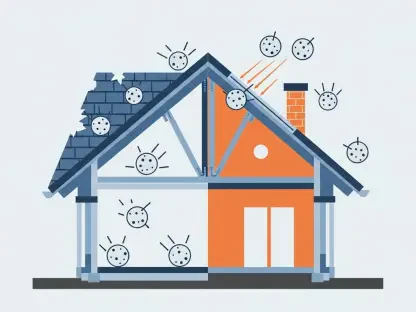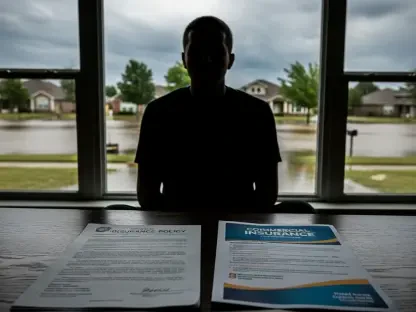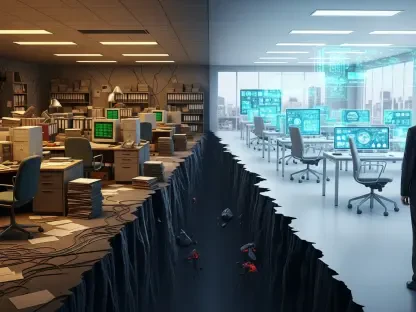Hawaii finds itself at a pivotal juncture, confronting a multitude of pressing political and environmental challenges as the legislative session nears its conclusion. The state legislature is taking substantial steps to address critical issues like climate change adaptation, property insurance stabilization, illegal fireworks regulation, and utility company liability limits. This collection of legislative efforts underscores Hawaii’s commitment to pursuing long-term sustainability while simultaneously responding to immediate crises. The potential for special sessions to accommodate federal funding impacts signals a flexible, adaptive approach by the legislature, enhancing its capacity to address unpredictability in financing and support.
Climate Change Strategies
Innovative Funding Solutions
Within these initiatives is the climate impact fee, encapsulated in SB1396, signifying a prominent step in bolstering Hawaii’s climate resilience efforts. This proposal seeks to incrementally raise the transient accommodations tax and impose additional levies on cruise ships docking in Hawaii. The anticipated revenue, while falling short of comprehensive climate project requirements, demonstrates a strategic approach in leveraging these funds to issue bonds. Such financial instruments could potentially unlock greater investment streams, facilitating the execution of substantial environmental projects essential for the state’s future sustainability.
The introduction of this fee marks a significant shift toward long-term resilience planning. Financial leveraging stands out as a viable pathway for amplifying resource utilization efficiency. By embracing this funding strategy, the state strives to overcome fiscal constraints while still realizing large-scale climate initiatives. The additive taxes form a core part of Hawaii’s proactive adaptation efforts, aimed at both immediate mitigation and future-proofing against climate adversities. The measure reflects a balancing act between immediate fiscal availability and visionary environmental planning, highlighting the legislative intent to safeguard the islands against evolving climatic threats.
A Legacy for Future Generations
Governor Josh Green ardently supports this legislation, framing it as an infrastructural legacy vital to addressing Hawaii’s vulnerabilities against climate change, a pressing concern in the modern era. As an administration hallmark, this climate initiative affirms a forward-looking posture in environmental stewardship. The responsibility for fund allocation rests with the legislative body, which ensures a collaborative approach to this multifaceted issue, weaving collective discernment into budgetary and resource management discussions that transcend immediate limitations.
In championing this measure, the governor underscores its significance as a crucial juncture in Hawaii’s environmental policy, likely to shape stewardship pathways for subsequent administrations and generations. The legislative focus on securing financial channels through treasury mechanisms illustrates a commitment to holistic resource planning, ensuring that Hawaii remains resilient amid escalating climate challenges. This intergenerational dialogue symbolizes a shift toward comprehensive and anticipatory environmental strategies, targeted at defining Hawaii’s ecological future.
Property Insurance Market Recovery
Expanding Insurance Access
The challenges faced by the property insurance market in Hawaii, especially for condominium residents, are a major concern addressed by SB1044. This legislative effort provides a framework for state agencies to extend commercial and hurricane insurance, offering a lifeline for properties struggling with soaring rates or coverage losses. By expanding the role of entities like the Hawaii Hurricane Relief Fund and the Hawaii Property Insurance Association, the state aims not only to stabilize the insurance landscape but also to create an environment that is attractive to private insurers, fostering an ecosystem of responsible coverage.
The alleviation of insurance burdens through governmental frameworks is designed to balance risk perceptions with market confidence, ensuring Hawaii’s housing sector remains viable and appealing to insurers. Furthermore, the legislation encourages the re-entry of private insurers, thereby promoting a more diversified insurance market and reducing dependence on governmental schemes over time. This dual approach illustrates Hawaii’s dedication to restoring stability within the property insurance sector by proactively addressing coverage gaps.
Tackling Deferred Maintenance
Within its purview, SB1044 also tackles deferred maintenance issues, a significant barrier to insurance accessibility for many condominiums. By introducing a condominium loan program, this initiative provides financial solutions for essential upgrades like fire sprinkler installations and pipe replacements. Recognizing that incomplete insurance often stems from unsatisfactory infrastructure, the program delivers a pragmatic pathway to surmounting these obstacles, ensuring property owners can undertake necessary safety enhancements.
Such efforts represent a comprehensive strategy to intertwine housing stability with insurance accessibility, facilitating a holistic approach to residential viability and safety. This loan program not only addresses urgent maintenance needs but also bridges financial gaps preventing safety improvements from being realized, setting a precedent for interconnected housing and insurance solutions. SB1044 underscores Hawaii’s strategic approach to ensuring properties are not only insured but also up to standard, fostering a safe and reliable housing environment for the state’s residents.
Combating Illegal Fireworks
Technological Enforcement Enhancements
Illegal fireworks remain a chronic problem across Hawaii, with community safety repeatedly compromised during major celebrations. To enhance enforcement capabilities, HB550 leverages technological advancements by empowering law enforcement to deploy drones for evidence collection. This modern strategy seeks to bridge the gap in traditional enforcement and prosecution, addressing the perennial challenge of insufficient grounds for charging offenders in an era where digital tools can significantly augment policing tactics.
By implementing drone technology, HB550 facilitates evidence gathering, strengthening the prosecutorial process and enhancing law enforcement’s capacities to curb illegal activities. This innovative approach reflects a strategic utilization of technology to bolster community safety, addressing enforcement dilemmas that have historically undermined deterrence mechanisms. The technological framework offers the potential for more robust deterrence, promoting greater adherence to public safety regulations and contributing to the preservation of community order.
Strengthening Deterrence
Complementing the technological focus is HB1483, which targets enhanced penalties for repeat offenders and those responsible for serious injuries or fatalities from fireworks-related incidents. By elevating the consequences for such violations, the bill aims to fortify community safety measures, ensuring that offenders face substantial repercussions. These legislative changes reflect an acute awareness of enforcement gaps, where historical challenges in gathering evidence and setting stringent thresholds for prosecution have hindered deterrence effectiveness.
Both HB550 and HB1483 collectively represent unwavering legislative resolve to combat illegal fireworks and elevate community safety standards. Their implementation underscores a comprehensive strategy to strengthen enforcement and foster adherence to public safety norms, demonstrating Hawaii’s commitment to upholding the rule of law across community practices. By emphasizing stringent penalties, these bills aim to deter would-be offenders, revising enforcement methodologies toward a more proactive and impactful framework.
Utility Company Liability and Infrastructure
Financially Prudent Risk Management
With SB897, the legislature addresses the risk management framework by empowering the Public Utilities Commission to institute liability caps for Hawaiian Electric Company in the aftermath of catastrophic events like wildfires. This strategic move aims to secure infrastructure upgrades through customer-backed bonds or securitization, allowing the utility company to address pressing infrastructural weaknesses without overbearing financial repercussions. By maintaining a realized cap limit, the bill ensures prudent financial planning while advancing necessary upgrades.
Such legislative actions acknowledge the growing necessity for modern risk management within utility sectors. The use of customer-backed bonds enhances financial mechanisms integral to infrastructural improvements, aligning fiscal prudence with broader risk mitigation efforts. This bill reflects an astute understanding of balancing prudent fiscal strategies with substantial infrastructural developments, ensuring energy providers address immediate and long-term needs effectively without imposing prohibitive costs on customers.
Ensuring Responsible Upgrades
Hawaii stands at a critical crossroads, grappling with a series of urgent political and environmental challenges as the legislative season approaches its conclusion. The state legislature is taking decisive action to tackle crucial issues such as climate change adaptation, stabilizing property insurance, regulating illegal fireworks, and setting liability limits for utility companies. These measures highlight Hawaii’s dedication to achieving long-term sustainability while also addressing immediate concerns. The possibility of special sessions enables the legislature to adapt to the impacts of federal funding, showcasing its flexible approach to managing unpredictability in financial and support matters. This strategy reflects Hawaii’s commitment to responsive governance and its ability to pivot in the face of evolving challenges, underscoring a balanced pursuit of current needs and future resilience. Hawaii’s legislative momentum not only aims to secure a stable and sustainable future but also enhance the state’s ability to respond swiftly to arising crises.









